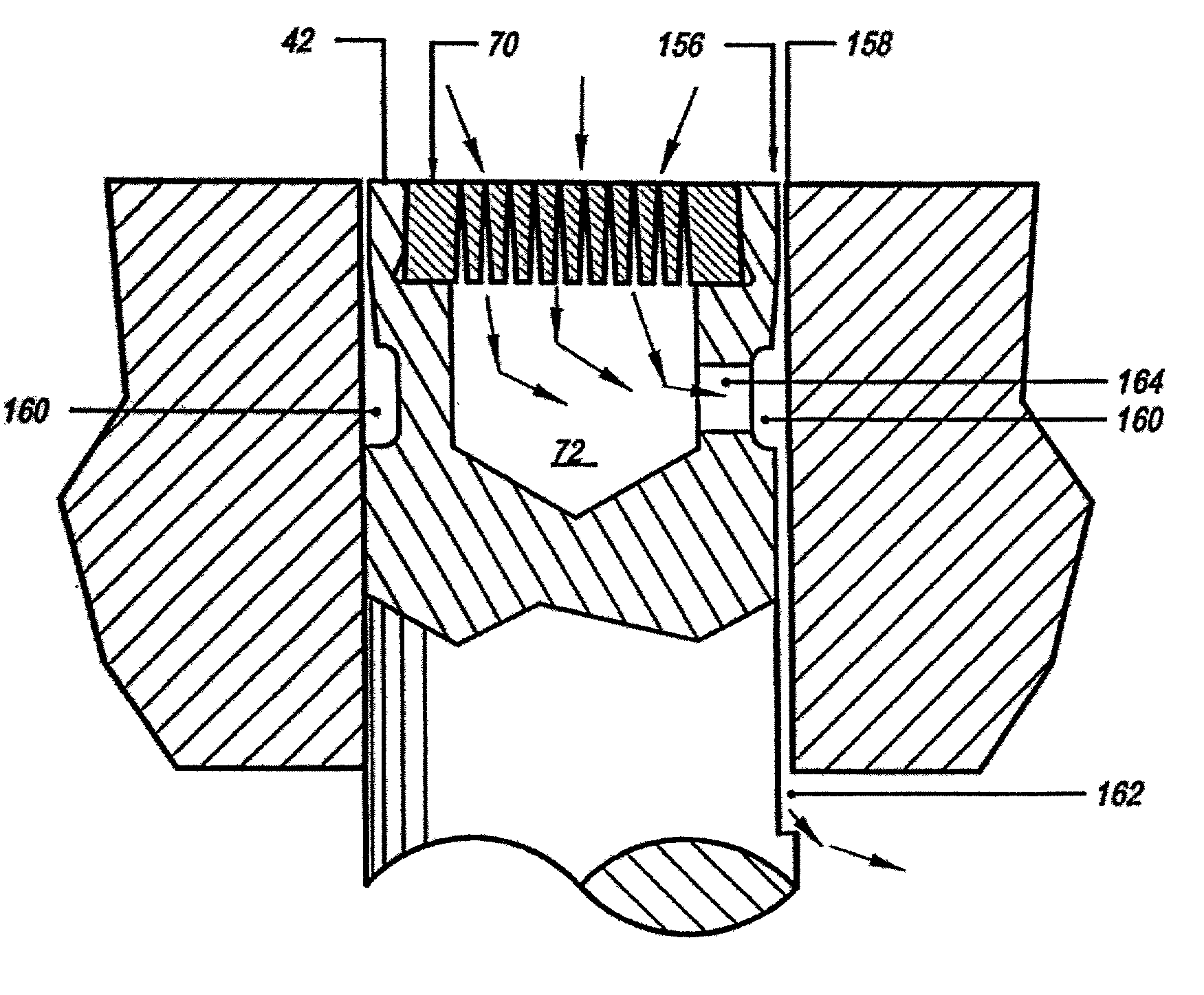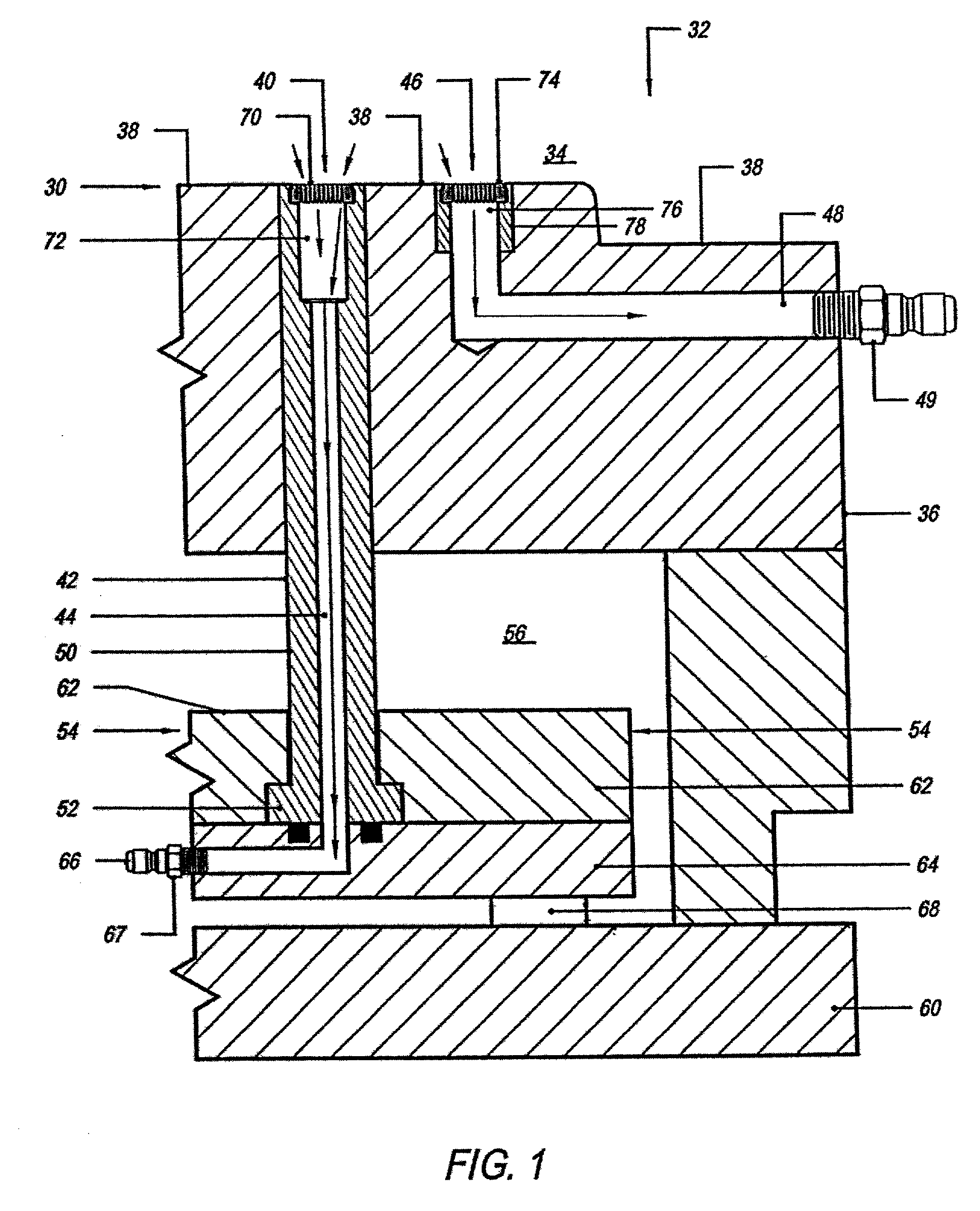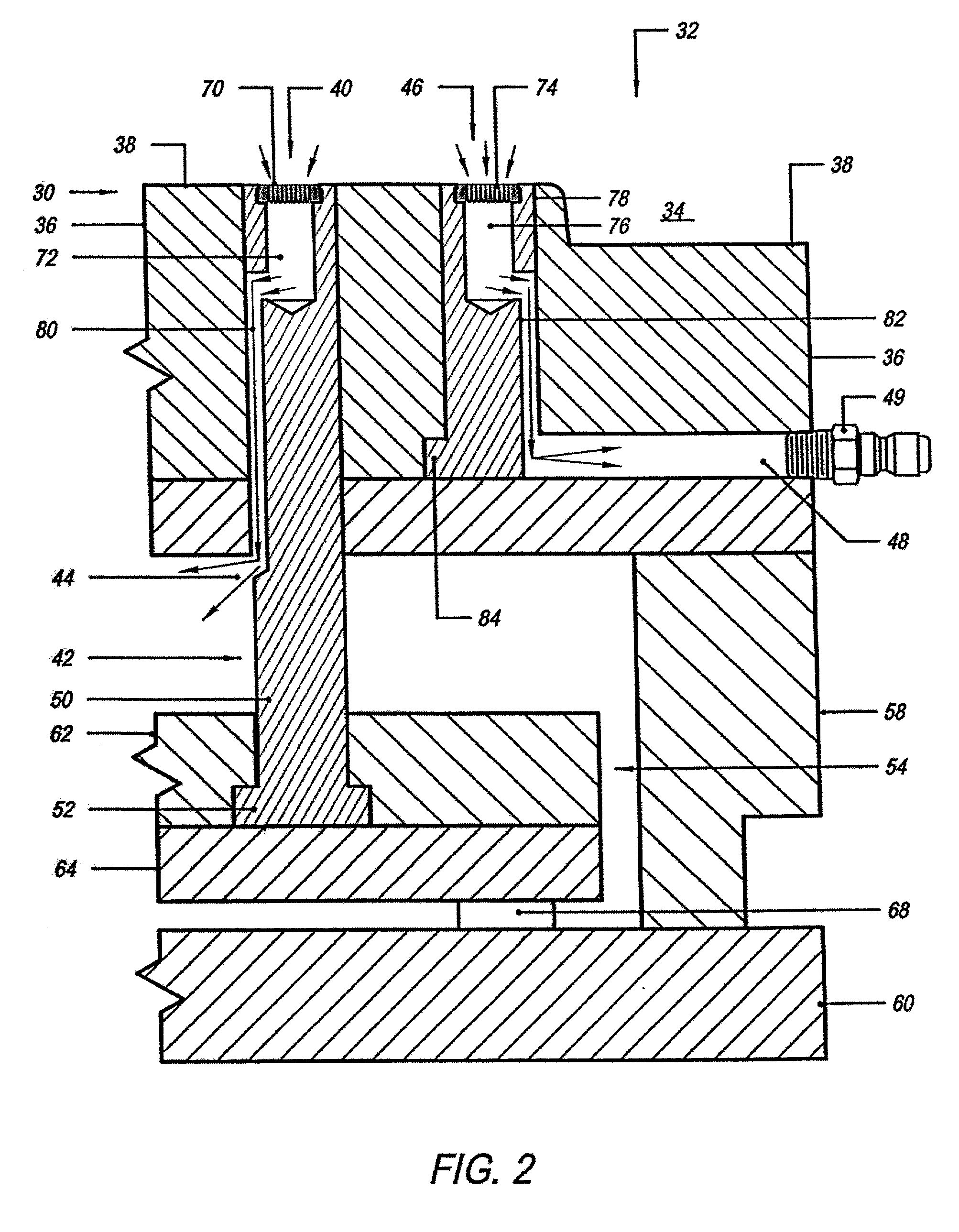Mold vent and method
a technology of mold material and venting method, which is applied in the field of mold vent and system, can solve the problems of trapped air imparting knit lines or poor surface cosmetics in the exterior of the finished part, gas from the mold material can migrate into the mold material creating porosity or bubbles in the finished part, and accelerating venting. , the effect of convenient us
- Summary
- Abstract
- Description
- Claims
- Application Information
AI Technical Summary
Benefits of technology
Problems solved by technology
Method used
Image
Examples
Embodiment Construction
[0065] FIG. 1 illustrates one portion 30 of a mold 32, preferably a mold half, having a mold cavity 34 in which a hardenable or moldable material is introduced in a flowable state, preferably under pressure. The mold half 30 is comprised of an upper plate 36 with a mold cavity surface 38 that preferably is contoured to impart a desired shape to the moldable material when the moldable material solidifies or hardens.
[0066] To facilitate evacuation of air and other gases in the mold cavity, the mold half 30 has at least one vent. For example, the mold half 30 shown in FIG. 1 has a first vent 40 carried by a pin 42. Such a pin 42 can be a reciprocable ejector pin or core pin that can include a vent passageway 44. The mold half 30 is shown equipped with a second stationary vent 46 disposed in the mold cavity surface 38 that communicates with a vent passageway 48 in plate 36.
[0067] During molding, another portion of the mold 32 mates with the mold half 30 and a hardenable material is intr...
PUM
| Property | Measurement | Unit |
|---|---|---|
| width | aaaaa | aaaaa |
| width | aaaaa | aaaaa |
| length | aaaaa | aaaaa |
Abstract
Description
Claims
Application Information
 Login to View More
Login to View More - R&D
- Intellectual Property
- Life Sciences
- Materials
- Tech Scout
- Unparalleled Data Quality
- Higher Quality Content
- 60% Fewer Hallucinations
Browse by: Latest US Patents, China's latest patents, Technical Efficacy Thesaurus, Application Domain, Technology Topic, Popular Technical Reports.
© 2025 PatSnap. All rights reserved.Legal|Privacy policy|Modern Slavery Act Transparency Statement|Sitemap|About US| Contact US: help@patsnap.com



